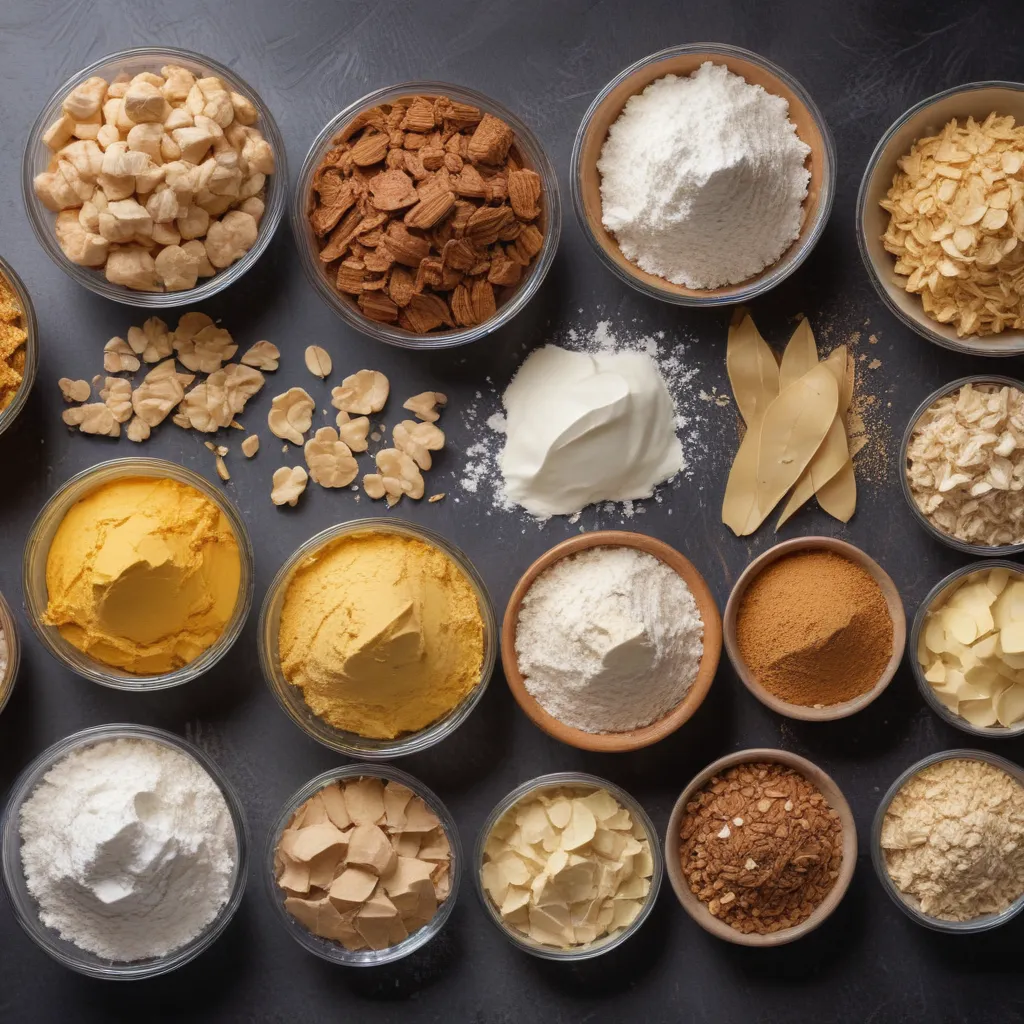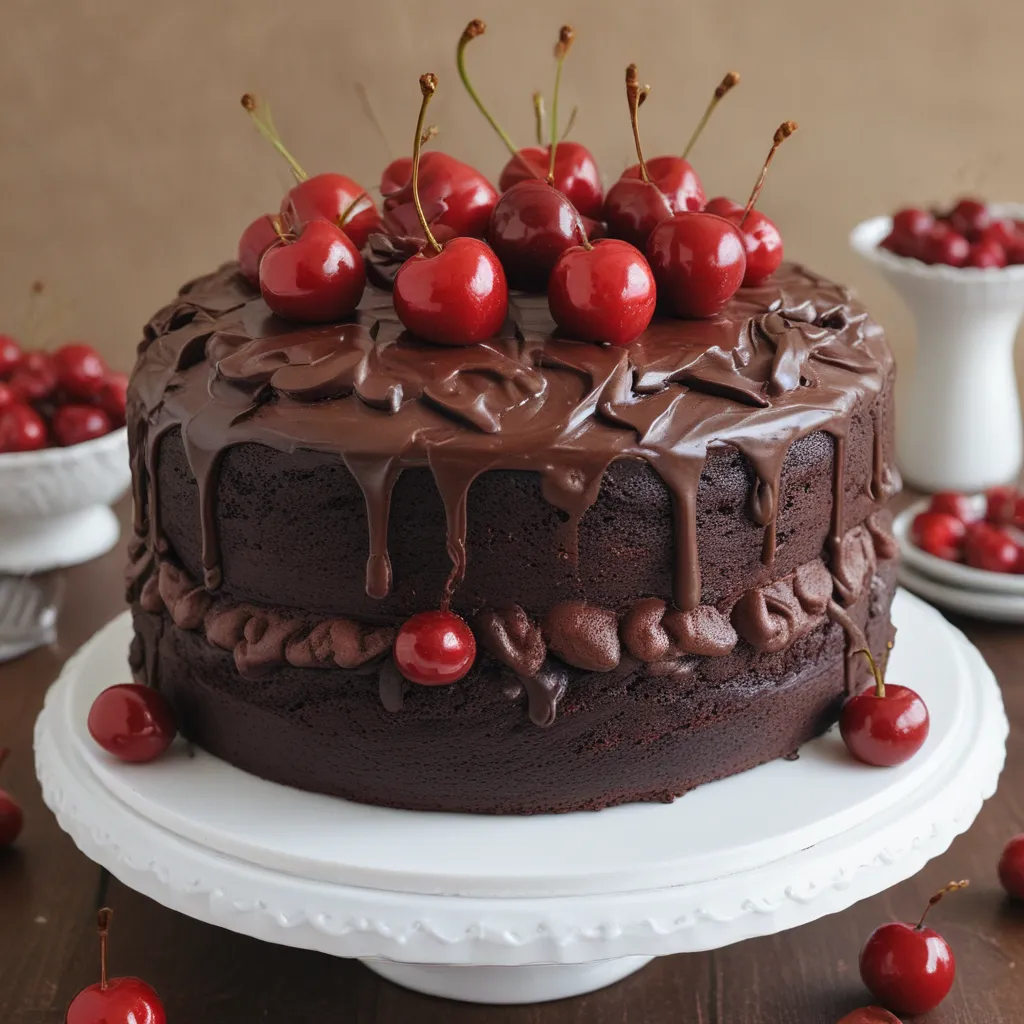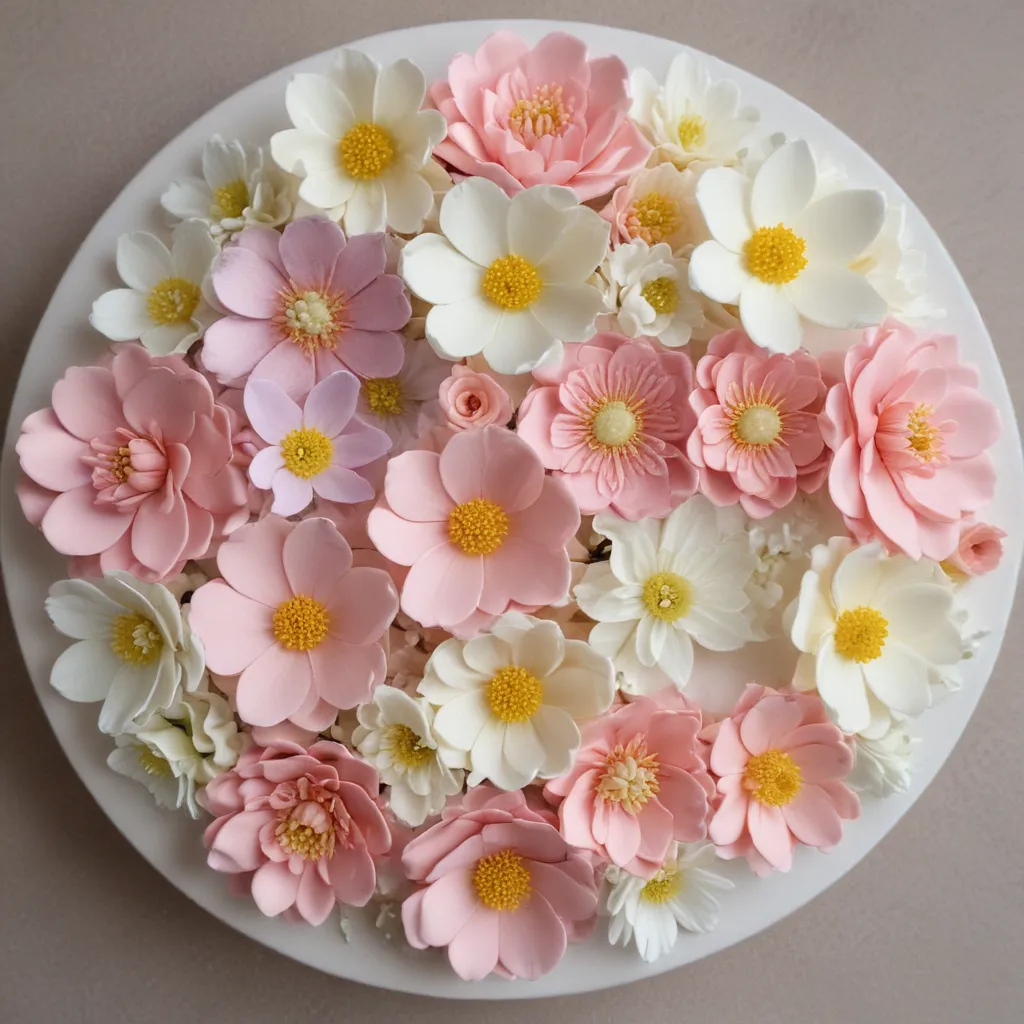
Ah, the sweet aroma of freshly baked cakes wafting through the air – is there anything more tantalizing? As the owner of Jax Cake Shop in San Jose, I’ve seen my fair share of cake enthusiasts come through the door, each with their own unique tastes and preferences. But what many of them don’t realize is the intricate dance of chemistry that goes on behind the scenes to create those delectable masterpieces.
The Basics of Baking
Baking is, at its core, a science. It’s a carefully choreographed ballet of ingredients, each with its own role to play in the grand finale. Think of it like a symphony orchestra – you’ve got your woodwinds (the flour), your strings (the eggs), your brass (the sugar), and so on. And just like in music, if one section is off, the whole thing can fall apart.
Let’s start with the foundation – flour. This humble ingredient is the backbone of any baked good, providing structure and texture. But it’s not just a simple matter of tossing some flour into a bowl. Oh no, my friends, there’s a whole lot more going on under the surface. You see, flour is made up of proteins, primarily gluten, that act as the scaffolding for your cakes and breads. The more you work the dough, the more those gluten strands develop, resulting in a chewier, more bread-like texture.
But wait, there’s more! The type of flour you use can also have a dramatic impact on the final product. All-purpose flour, with its medium gluten content, is a great all-arounder. Pastry flour, on the other hand, has lower gluten levels, making it perfect for tender, flaky baked goods. And then there’s bread flour, with its higher gluten content, which is ideal for – you guessed it – bread.
The Egg-cellent Ingredient
Eggs are another integral component in the baking equation, and they bring a whole host of superpowers to the table. For starters, they act as binders, helping to hold everything together and prevent crumbling. But that’s not all – they also contribute to the structure, providing lift and volume.
The secret lies in the magic of emulsification. You see, eggs contain both fat (in the yolk) and water (in the white), which means they can act as a bridge between these two normally incompatible ingredients. This allows for a smooth, homogeneous batter that can trap air bubbles, resulting in that light, airy texture we all love.
But the egg’s role doesn’t stop there. They also add richness and moisture to baked goods, thanks to the fat and protein they contain. And let’s not forget about their leavening abilities – when beaten, the air trapped in the egg whites can expand during baking, causing cakes and soufflés to rise to dizzying heights.
The Sweetest of the Bunch
No discussion of baking science would be complete without delving into the world of sugar. This versatile ingredient plays a crucial part in the success (or failure) of your baked creations.
For starters, sugar helps to tenderize the structure of baked goods by interfering with gluten development. The more sugar you add, the less gluten can form, resulting in a more delicate, crumbly texture. Sugar also attracts and binds water, which can improve moisture and prevent drying.
But sugar’s superpowers don’t end there. It also plays a vital role in caramelization and Maillard reactions, the complex chemical processes that give baked goods their signature golden-brown hues and delectable flavors. As the temperature rises, the sugars in your batter or dough begin to brown, creating a whole host of new aroma and flavor compounds.
This is why a sprinkle of sugar on top of a loaf of bread can result in that beautiful, shiny crust – the sugar is essentially “toasting” the surface, adding an extra layer of complexity and depth.
The Fat of the Matter
Ah, fat – the unsung hero of the baking world. While it’s easy to get caught up in the glamour of flour and sugar, the humble fat plays a crucial role in creating the perfect texture and mouthfeel.
Fats, like butter, oil, or shortening, act as tenderizers, disrupting gluten strands and preventing them from forming too much structure. This results in a more delicate, tender crumb. They also contribute to that irresistible, melt-in-your-mouth sensation we all crave.
But that’s not all – fats can also help to retain moisture, preventing baked goods from drying out. They act as insulators, slowing down the rate of starch gelatinization and protein coagulation during baking. This means your cakes and cookies stay soft and moist for longer.
And let’s not forget about the flavor factor. Fats like butter and oil can impart rich, decadent flavors that complement the other ingredients in your recipe. They’re the unsung heroes that bring everything together in perfect harmony.
The Leavening Agents
No baking discussion would be complete without a deep dive into the world of leavening agents. These are the unsung heroes that give our baked goods that perfect rise and airy texture.
The two most common leavening agents are baking soda and baking powder. Baking soda is a base, reacting with acidic ingredients (like buttermilk or chocolate) to produce carbon dioxide bubbles. Baking powder, on the other hand, is a self-contained leavening system, containing both the base and the acid needed to create those precious gas bubbles.
But the magic doesn’t stop there. The timing and method of adding your leavening agents can also have a dramatic impact on the final result. For example, if you add baking soda too early, you risk losing all that precious CO2 before it has a chance to work its magic in the oven.
And let’s not forget about the power of steam! As the batter or dough heats up, the water molecules transform into water vapor, which can also contribute to lift and rise. This is why it’s so important to have the right balance of wet and dry ingredients – too much water can result in a dense, gummy texture.
The Flavors of Baking
Baking is not just about the science – it’s also about the art of creating delicious, memorable flavors. And the key to unlocking those flavor profiles lies in understanding the interplay of various ingredients.
Take vanilla extract, for instance. This humble ingredient is a powerhouse of complex aromas, with notes of wood, floral, and even a hint of smokiness. When combined with the sweetness of sugar and the richness of butter or eggs, it can elevate a simple cake to new heights of flavor.
But the flavor fun doesn’t stop there. Spices like cinnamon, nutmeg, and cloves can add warmth and depth, while citrus zests can provide a bright, refreshing counterpoint. And let’s not forget about the world of extracts – from almond to maple, the possibilities are endless.
The real magic, though, happens when you start to layer these flavors, creating a harmonious symphony of taste. It’s like a culinary orchestra, with each ingredient playing its part to create a truly memorable experience.
Putting It All Together
So, there you have it – the science behind the art of baking. From the intricate dance of flour and gluten to the magic of leavening agents and the symphony of flavors, there’s a whole lot more going on in that humble cake or loaf of bread than meets the eye.
As the owner of Jax Cake Shop, I’ve seen firsthand the power of understanding these principles. By mastering the science of baking, we’re able to create custom cakes and pastries that not only look stunning but also taste absolutely divine. After all, what’s the point of a beautifully decorated cake if it doesn’t deliver on the flavor front?
So, the next time you bite into one of our creations, take a moment to appreciate the incredible chemistry that went into making it. Who knows, you might just uncover a newfound appreciation for the science of baking. And if you’re feeling inspired to try your hand at some homemade creations, be sure to check out our website at https://www.jaxcakeshop.com/ for all the tips, tricks, and recipes you need to get started. Happy baking, my friends!





